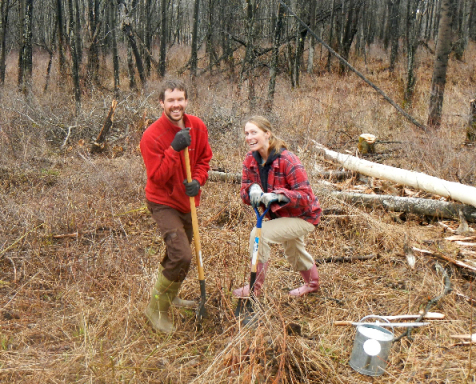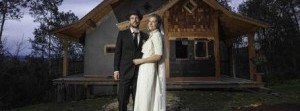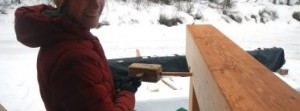
Solid Ground
My friend Robert suggested the name “Solid Ground” for this blog. While I’d already chosen Straw Bale Tales, it seemed like a fitting title for a post about foundations.
Robert also suggested April 26 as an auspicious day for breaking ground. Almost four years ago when I started building my garage and temporary home, I pushed ahead despite the stars being aligned against me: Mercury was retrograde, a time when plans invariably get turned upside down. Mercury retrograde is not a time for solid ground. It is a time when the ground slides like sand beneath your feet.
Having learned my lesson the first time around, I asked Robert to suggest a date for breaking ground on the house. Although we weren’t ready to excavate on April 26, we held a small groundbreaking ceremony: just us, our carpenter and a couple of shovels.
This morning is a different matter altogether. This morning I’m typing to the sound of a backhoe tearing earth out of the ground. This morning, it’s suddenly all very real — no turning back.
Like everything else, we’ve put a lot of thought into our foundation. The slope of our land (the ground drops more than eight feet over our foundation’s 32-foot length) means we need a walkout basement. The front will be framed with double 2×4 walls and insulated either with blown-in cellulose or mineral wool. The back and sides are… well, not as simple as one might imagine.
The latest thing in basements — or, for some, entire houses — is ICFs, or insulated concrete forms. ICFs are hollow Styrofoam blocks that are stacked, Lego-style, then poured full of concrete. Unlike traditional basements, where forms are constructed and then removed, the forms and insulation are one and remain after the cement has set. While the materials are more expensive, ICFs save on labour costs.
Not liking the use of so much Styrofoam, Nick went looking for ICFs made from a natural material and discovered Faswall and Durisol, which are both made from cement bonded wood fiber. Perfect! Except, we had the choice of shipping them from Ontario or Oregon. Expensive!
The traditional basement also has its merits. For one, not covering the inside of your walls with an insulating material allows the concrete slab to act as a thermal mass, absorbing heat during the day and radiating it at night. As well, Styrofoam ICFs aren’t fire rated and would have to be drywalled before we could move in. Bare concrete would allow us to leave our basement unfinished for the time being, as would Faswall or Durisol.
While researching Faswall, we discovered that another Smithers homebuilder was also considering them. Splitting the shipping cost brings these natural, renewable building blocks within our price range, at only a couple thousand more than a traditional basement. But, it depends on Debbie also ordering them — and, like us, she’s busily running around, doing research and weighing her options.
So, as the backhoe grinds away outside, we’re getting that much closer to making a decision. Once the hole is dug, we need to fill it within a couple weeks, meaning that Faswall would need to be ordered in the next couple days. At the moment, it seems likely that we’ll end up with something fairly conventional. But maybe that makes for the best foundations: something simple, supportive and solid.
http://strawbaletales.wordpress.com/



